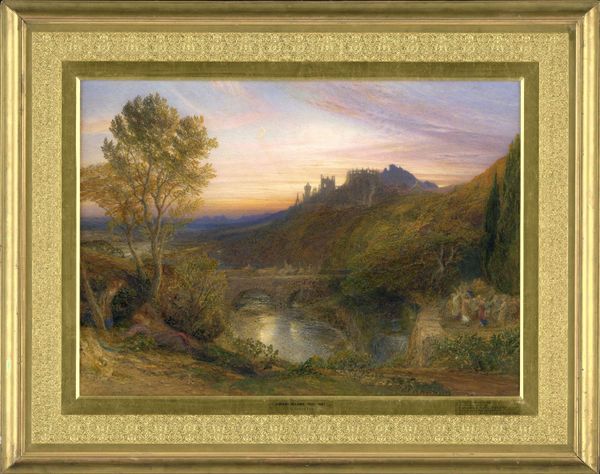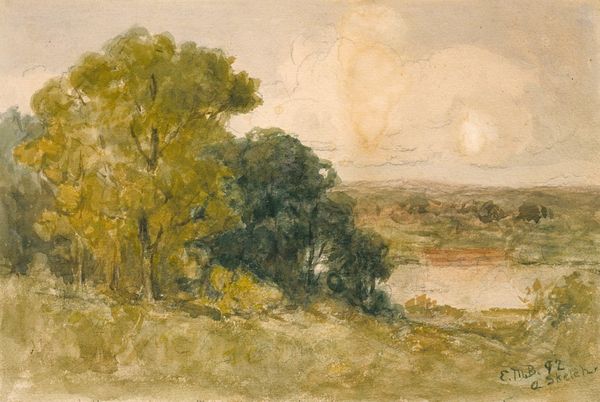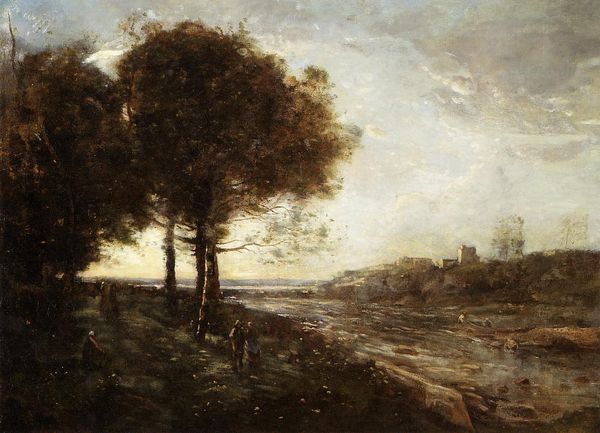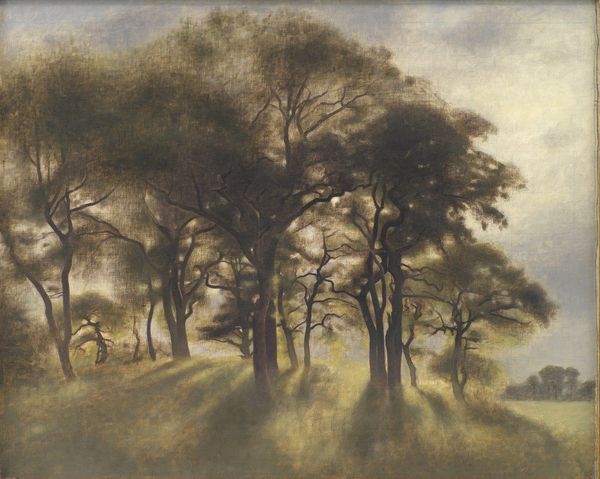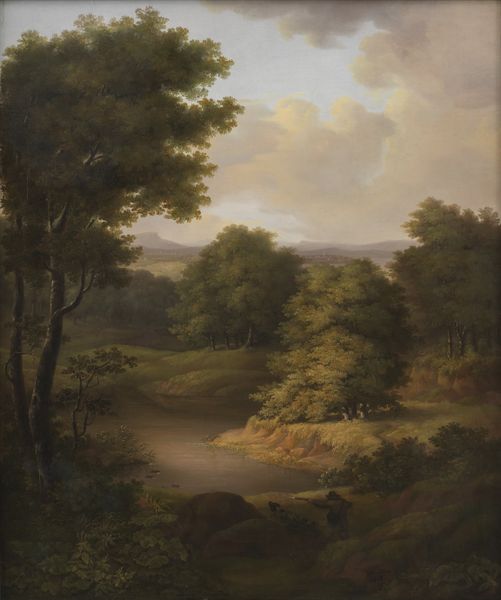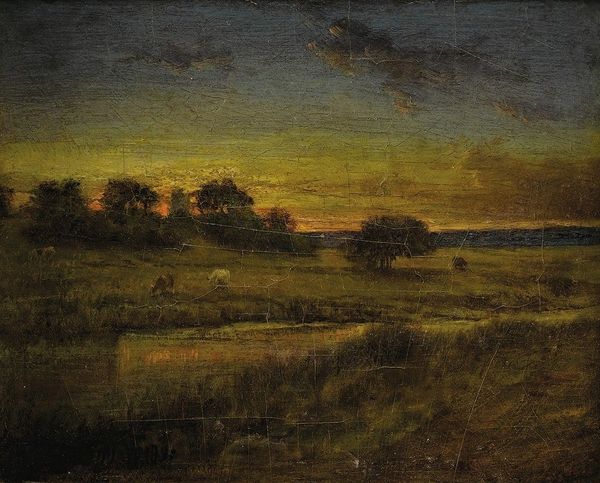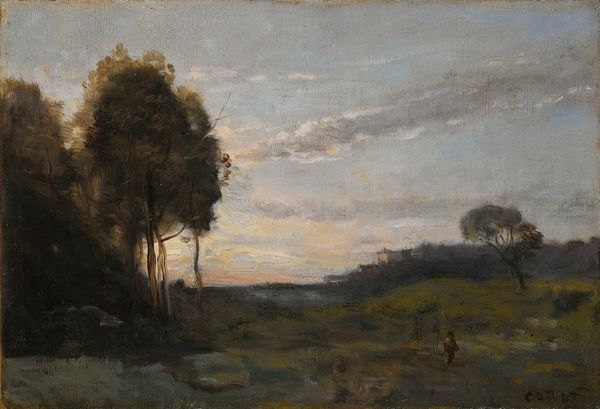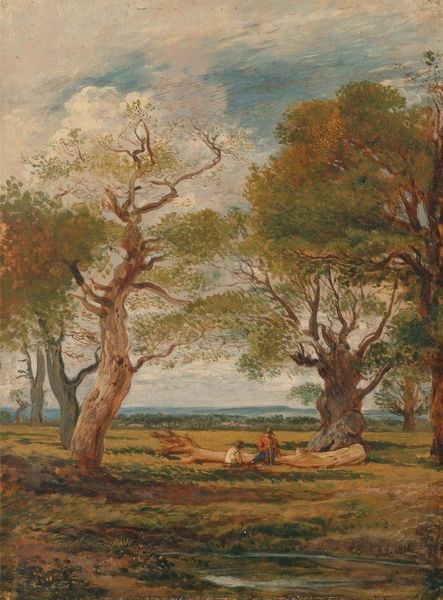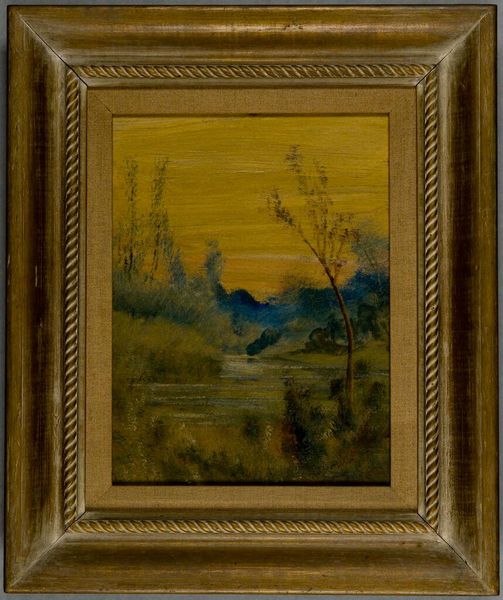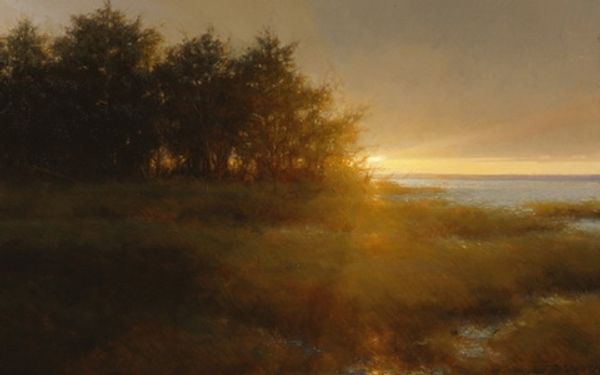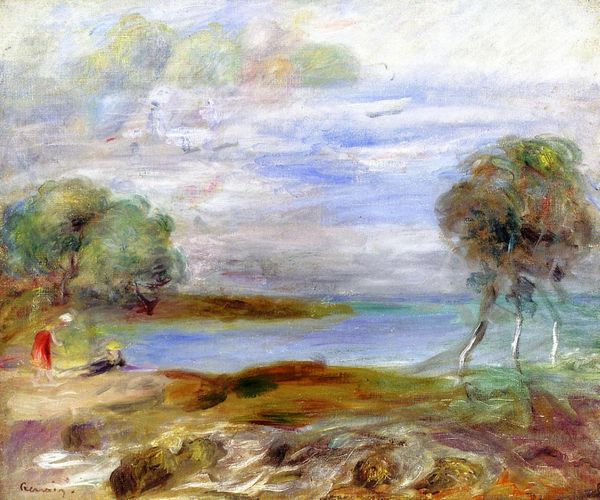
Dimensions: height 510 mm, width 710 mm, height 76.5 cm, width 96 cm, depth 3.3 cm
Copyright: Rijks Museum: Open Domain
Samuel Palmer created "The Curfew (of: The Wide Water'd Shore)" using watercolor and gouache. Painted during England’s Industrial Revolution, the artwork's vision of rural tranquility can be understood as a reaction to the period's intense social and economic changes. It shows an idealized landscape with soft lighting and a peaceful atmosphere. The title itself evokes a sense of order and regulation, with the curfew bell traditionally signaling the end of the day and the return to domesticity. Palmer’s romantic vision of the English countryside can be linked to the broader cultural movement that idealized nature as a refuge from the perceived corruption of urban life. To fully understand such a landscape, historians examine period literature, economic data, and local records. The image invites us to reflect on the complex interplay between art, society, and individual experience.
Comments
No comments
Be the first to comment and join the conversation on the ultimate creative platform.
